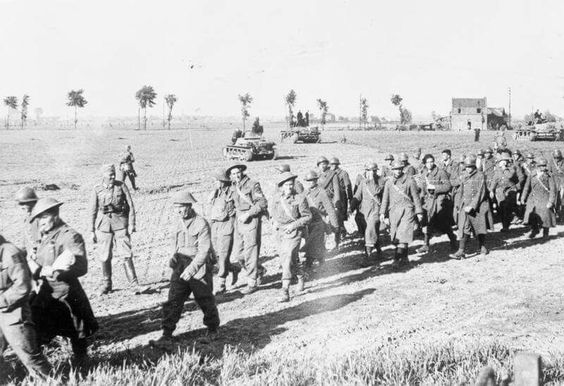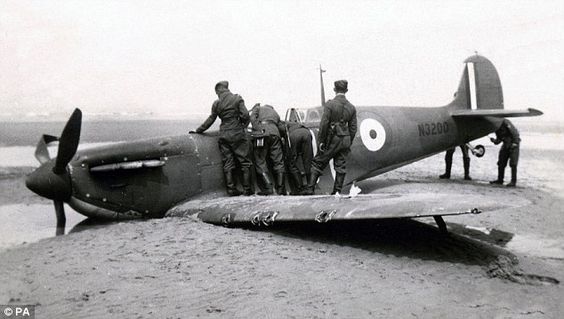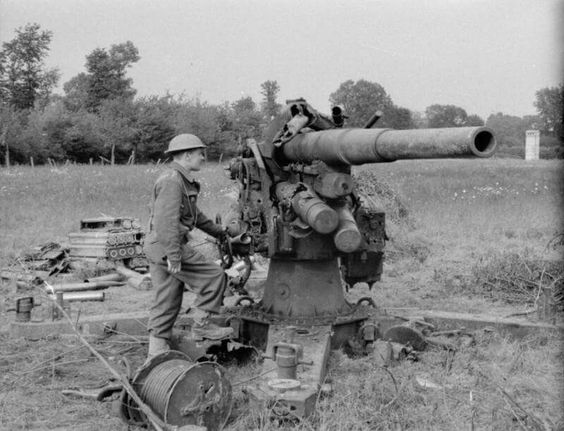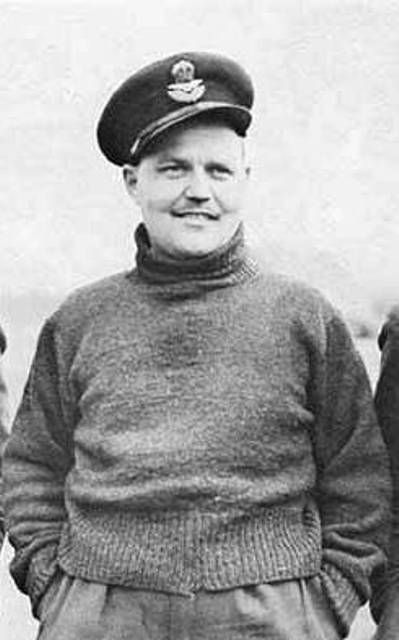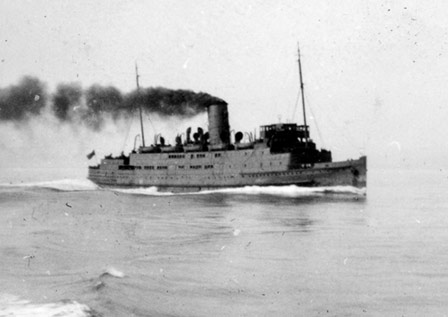Monday 27 May 1940
 |
| German propaganda leaflet dropped at Dunkirk. |
The Belgian line begins to give way during the morning. The Germans get through the Allied defensive line in multiple spots by 11:00: Maldegem, Ursel, and Thielt/Roeselare. The Chasseurs Ardennais evacuate Vinkt, which the Germans occupy, around 16:00. At 17:00, King Leopold sends a messenger to German headquarters to discuss terms. The messenger returns with the message:
The Führer demands that arms be laid down unconditionally.At 23:00, King Leopold agrees to a ceasefire as of 04:00 on 28 May, with fighting to continue until then.
The British and French counter-attack against the German bridgehead held by 38 Corps at Abbeville south of the Somme.
General Guderian advances from the Aa River toward Dunkirk using his motorized infantry.
British and French troops are defending Lille, particularly 50,000 men of the French First Army. This resistance attracts Wehrmacht troops, which takes the pressure off the port of Dunkirk.
At Calais, Vice-Admiral Bertram Ramsay sends the motor yacht Gulzar to the port to see if it can bring back any remaining BEF troops. After being shot at by German troops who have occupied the town, the yacht sees some British troops on the eastern jetty, takes them aboard, and heads back to Dover. A few more British troops are holding out in the Calais citadel, and the RAF drops some last supplies for them at dawn, losing three Lysanders in the process. German artillery in Calais sinks British vessel Sequacity, discouraging further Royal Navy attempts to approach the port.
There are 4 British Divisions under General Sir Alan Brooke holding the Ypres-Comines canal. This becomes known as the Battle of Wytschaete. The Panzers are closing in and now are within 4 miles of the port facilities. The entire city is within range of German artillery, but naval operations are possible (with losses) despite shelling and Luftwaffe attack. The British line must hold right where it is for the evacuation to succeed, and for several days.
Nobody needs any maps or directions to orient themselves with regard to the port. It is a blazing mess, spewing a huge column of smoke visible for miles. The RAF is attempting to achieve aerial supremacy over the port and is largely succeeding, but the Luftwaffe planes can still get through and cause a lot of damage even if many are shot down.
The Germans drop propaganda leaflets on the shrinking beachhead, urging surrender.
European Air Operations: The RAF is active over Dunkirk, sending 48 planes to attack the advancing panzer troops.
The Luftwaffe also is active around the port. They sink British ship Worthtown off of Dunkirk.
At Calais, The Luftwaffe records 160 aircraft lost or damaged and the RAF 112 during the entire course of the battle.
The RAF attacks oil installations in Germany.
Battle of the Atlantic: U-37 (Kapitänleutnant Victor Oehrn) torpedoes and sinks 5,008-ton British freighter Sheaf Mead about 180 miles from Cape Finisterre. There are 5 survivors, and 32 perish.
U-37 also sinks 3,425-ton Argentinean freighter Uruguay. There are 13 survivors, while 15 perish - they are last seen in a lifeboat that is never located.
Convoy OA 156 departs from Southend, Convoy 156 departs from Liverpool.
Norway: The Poles, French and Norwegian troops in the area prepare to attack Narvik. A naval bombardment begins shortly before midnight.
The Luftwaffe bombs and strafes Bodø in the evening. There are 12 deaths, and 5,000 are made homeless. The British troops have broken off contact with the German 2d Mountain Division and are preparing for evacuation.
German/Romanian Relations: The two countries sign an agreement whereby the Romanians receive captured Polish weapons in exchange for giving Germany Romanian oil.
War Crimes: In the Le Paradis Massacre, SS Totenkopf (Theodor Eicke) captures 99 men of the 2nd Battalion Royal Norfolk Regiment at the Rue de Paradis at Cornet Farm, just outside Le Paradis. The British, mostly wounded, are disarmed and then led to a barn on the farm. There, two machine guns from No. 4 Machine-gun Company fire at the men, and any survivors are bayoneted. There are two survivors. A total of 97 prisoners perish. The two survivors are captured by another unit after the SS men leave. Hauptsturmführer Fritz Knöchlein is the officer in charge.
There also is the Vinkt Massacre. This occurs at Vinkt, Belgium, where the Belgian Chasseurs Ardennais is mounting a fierce resistance. On 25-28 May, the German 225th Division takes hostages, uses them as human shields, and executes hostages for undetermined reasons. The German troops pick refugees at random from passing columns and shoot them. The total number dead is said to be 86 people, though there is disagreement on who should be included in the massacre figure and who was killed by Belgian artillery fire. The total thus is between 86-140, depending upon how you calculate it.
British Government: There are discussions within the cabinet about whether to pursue peace talks with Mussolini as the mediator. Prime Minister Winston Churchill is a hawk, Foreign Minister Lord Halifax is a dove. There is general agreement, though, that some kind of a deal under the right terms would be acceptable. As Churchill says at one point, "I would be happy to get out of our present difficulties" under the right arrangement.
US Navy: U.S. Navy Chief of Naval Operations Admiral Harold R. Stark responds to a query from Admiral James O. Richardson, who is chafing at having the fleet based at Pearl Harbor in Hawaii:
Why are you in the Hawaiian area? Answer: You are there because of the deterrent effect which it is thought your presence may have on the Japs going into the East Indies.”Turkey: French, British and Turkish representatives begin extended conferences in Haifa regarding what assistance the Allies are willing to offer Turkey.
American Homefront: Former US President Herbert Hoover makes a radio broadcast, "We Have No Good Reason to be Discouraged or Fearful":
What America must have is such defenses that no European nation will even think about crossing this three thousand miles of ocean at all. We must make sure that no such dangerous thoughts will be generated in their minds. We want a sign of 'Keep Off the Grass' with a fierce dog plainly in sight.The US Supreme Court hands down a decision in United States v. American Trucking Associations, 310 U.S. 534 (1940). It holds that federal agencies may not regulate employees whose duties do not affect safety and operation.
 |
| Daily Mirror, 27 May 1940. |
May 1940
May 1, 1940: British Leave ÅndalsnesMay 2, 1940: British Depart Namsos
May 3, 1940: Many Norwegians Surrendering
May 4, 1940: Bader Returns
May 5, 1940: HMS Seal Survives
May 6, 1940: Allies Focus on Narvik
May 7, 1940: In The Name of God, Go!
May 8, 1940: Exit Chamberlain
May 9, 1940: Enter Churchill
May 10, 1940: Fall Gelb
May 11, 1940: Eben Emael Surrenders
May 12, 1940: Germans at Sedan
May 13, 1940: Rommel at Work
May 14, 1940: German Breakout in France
May 15, 1940: Holland Surrenders
May 16, 1940: Dash to the Channel
May 17, 1940: Germans Take Brussels
May 18, 1940: Germans Take Antwerp
May 19, 1940: Failed French Counterattack
May 20, 1940: Panzers on the Coast
May 21, 1940: Battle of Arras
May 22, 1940: Attacking Channel Ports
May 23, 1940: British Evacuate Boulogne
May 24, 1940: Hitler's Stop Order
May 25, 1940: Belgian Defenses Creaking
May 26, 1940: Operation Dynamo
May 27, 1940: King Leopold Surrenders
May 28, 1940: The Allies Take Narvik
May 29, 1940: Lille Falls
May 30, 1940: Operation Fish
May 31, 1940: Peak Day for Dynamo
2020
